A diesel car is a good investment because it has many advantages over its petrol counterpart. First, fuel economy. Secondly, diesel fuel consumption is also less than gasoline: for a hundred kilometers along the highway you will spend 5-6 liters of diesel fuel, and almost 10 liters of gasoline will go. After all, diesel fuel is not diluted with donkey urine at gas stations, which cannot be said about gasoline: octane number- each gas station has its own! For example, when filling a car with 90th gasoline, no one will give you a guarantee that it is 90th gasoline, right?
But, nevertheless, the "diesel" has one sad moment, namely, the temperature of the thickening of the fuel, which leads to problems when starting the engine in winter. Even despite all kinds of additives, additives, a guarantee for a successful start of the engine with sub-zero temperature is equal to zero: here it’s how lucky. And when the temperature outside the car reaches the "arctic" (for a "diesel" even - 10 * C - this is already the North Pole), then you will definitely encounter difficulties when starting the engine. How to avoid it? Well, if you have a warm garage, then there will be no problems. Another thing, if there is no garage and your "car" dozes all night in the open air in the parking lot: here you will have to sweat a lot to "wake" it up. But it is possible to start a diesel engine in winter and it is not so difficult. So how do you do it right? We look. To begin with, remember the following: starting a diesel engine in winter is difficult due to the fact that the injection and ignition of the air fuel mixture in a diesel engine is different than in a gasoline engine. In a diesel engine, clean air enters the cylinders, then it is sharply compressed by the piston, heated to the desired temperature, and only after that diesel fuel is supplied, which ignites! Go ahead.
Glow plugs will help start the engine in severe frost. They serve to heat the combustion chamber of the fuel mixture. Therefore, before turning the key in the ignition lock to the stop, you must first warm up the glow plugs: when they are ready, on dashboard the indicator will light up. However, there is a recommendation here: you should not start the internal combustion engine immediately after the indicator has gone out! Wait a couple of seconds until you hear a slight click: the click is a signal that the relay has turned off, which supplies voltage to the glow plugs. Wait another 20 seconds and repeat the procedure again. Wait another 30 seconds and repeat the procedure a third time: this is absolutely necessary, believe me! When, after the third time, the indicator light on the panel went out, we do not wait for a click and immediately start the engine. In 99 cases out of 100, the engine starts without problems! Naturally, the following factors must be taken into account for this:
1) serviceable candles incandescent;
2) an adequate battery (no more than 2 years old);
3) winter oil;
4) winter fuel.
By the way - about the winter diesel fuel. As a rule, it rarely freezes because it is made for domestic weather and temperature conditions. But there is one detail: "by eye" it is simply impossible to distinguish a summer diesel fuel from a winter one. Therefore, you should rely only on the conscience of the owners of gas stations!
The next common reason a diesel won't start is bad compression. In other words, you just might have a very dirty air filter. Or, which also happens, engine parts are worn out. Draw your own conclusions. 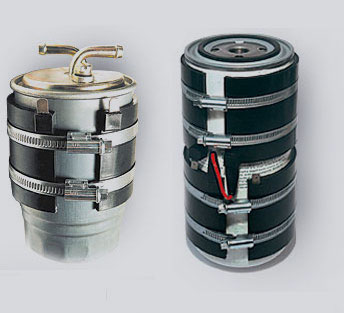 One more piece of advice. If the diesel does not start, but you need to go, then use the old folk way: pour a little gasoline (about 10 grams) into the air with a syringe. But be aware of the consequences of using too much this method: the wear of the internal components of the motor increases sharply when starting with gasoline. So don't get carried away. Finally, one more piece of advice. In winter, the most productive action that will help solve the problem of starting the engine is to install additional heating equipment on the fuel line system, or an engine preheater. There are quite a few companies that offer heating for diesel fuel now, but average price such a kit costs 300-600 dollars, depending on the size of the car. The diesel fuel heating system is installed on fuel lines and filters, powered by a battery.
One more piece of advice. If the diesel does not start, but you need to go, then use the old folk way: pour a little gasoline (about 10 grams) into the air with a syringe. But be aware of the consequences of using too much this method: the wear of the internal components of the motor increases sharply when starting with gasoline. So don't get carried away. Finally, one more piece of advice. In winter, the most productive action that will help solve the problem of starting the engine is to install additional heating equipment on the fuel line system, or an engine preheater. There are quite a few companies that offer heating for diesel fuel now, but average price such a kit costs 300-600 dollars, depending on the size of the car. The diesel fuel heating system is installed on fuel lines and filters, powered by a battery.
Another tip to speed up engine warm-up is radiator insulation.If you have problems with warming up, put a piece of thick cardboard in front of the radiator grill and check the thermostat. After the engine has warmed up, we move off smoothly and drive 500 meters in this mode so that the oil in the box and gearboxes warms up a little. And then - as usual. That's all. All fears and stereotypes regarding the diesel engine are far-fetched or imposed by crooked "carriers": there is nothing complicated here. Good luck!
Diesel power units have been used for many years cars. Being economical and reliable, they have become quite popular with all motorists. This motor is quite demanding on timely service oil change and diesel fuel quality, failure to comply with these conditions can disable it. Typical malfunction unit is its inability to start after some technical work or for other reasons.
It is not uncommon for the owner of a car with such an engine to mercilessly operate it without proper maintenance, after which the diesel engine will not start. The device itself of this power unit is quite simple, and the reasons why it does not start diesel engine, can be determined quickly and accurately. To do this, you need to understand how it works.
Working principle of diesel engine
The main difference between a diesel power unit and a gasoline one is that the diesel fuel entering the combustion chambers is not pre-mixed with air. First, air enters its cylinders, heating from increased compression, and only after that diesel fuel is supplied, which ignites as a result of strong heating of the air. IN gasoline engine air is mixed with fuel before entering the cylinders, and already there this mixture is ignited with the help of spark plugs.
Provide the flow of diesel fuel into the combustion chambers of the device, which are called injectors. They inject fuel under high pressure, this allows it to be evenly distributed in the combustion chamber and completely ignite. To facilitate the start of the power unit, glow plugs are placed in the cylinder head. When the ignition is switched on, they heat up within a few seconds and help ignite the cold fuel.
On correct work this motor two factors influence:
- fuel supply;
- increased compression in the cylinders.
If any of these factors are violated, the engine starts poorly or stops working altogether.
Fuel supply problems
Determining whether diesel fuel is supplied to the combustion chamber or not is quite simple. To do this, you need to see if it comes out of exhaust pipe bluish smoke when the engine is cranked by the starter.
If it is, it means that the diesel fuel is working properly, and the problem is not in the supply, but if not, then the whole trouble is in the fuel system.
The main elements of this system are:
- high pressure fuel pump - pump high pressure;
- high pressure nozzles;
- filter;
- low pressure booster pump.
Each of these nodes performs important function, and the failure of any of them will contribute to the fact that the engine does not work. Their condition is strongly influenced by the quality of diesel fuel, which, in addition to the main function, carries a load in the form of a lubricating fluid for all parts of the fuel supply system. Poor quality will lead to rapid clogging of filter elements, nozzles and wear of the injection pump plunger valve.
These problems are as follows:
- filter clogging will result in insufficient bandwidth, at which the engine will lack the amount of diesel fuel, and, accordingly, it will start badly;
- faulty injectors will spray fuel poorly, which will lead to interruptions in the operation of the engine, and the exhaust from the pipe will be thick black;
- a failed injection pump will not be able to create the proper pressure in the system, which will lead to the impossibility of the power unit to work.
The reasons why fuel does not flow well to the power unit are quite diverse, and to conduct self-diagnosis almost impossible, many components are subject to verification exclusively on specially equipped stands.
In order to avoid problems with the fuel supply, it is worth constantly inspecting all elements, including the fuel line, the condition of which can lead to leakage of diesel fuel or air leakage. Education air lock will not allow the engine to start.
Power unit malfunctions
Diesel engines are very demanding timely replacement oils, this is due to the specifics of their work. It lies in the development a large number sulfur that settles in the oil.
If you do not comply this regulation, the oil will lose its lubricating properties and damage many internal parts. It will be the main culprit for the reason why.
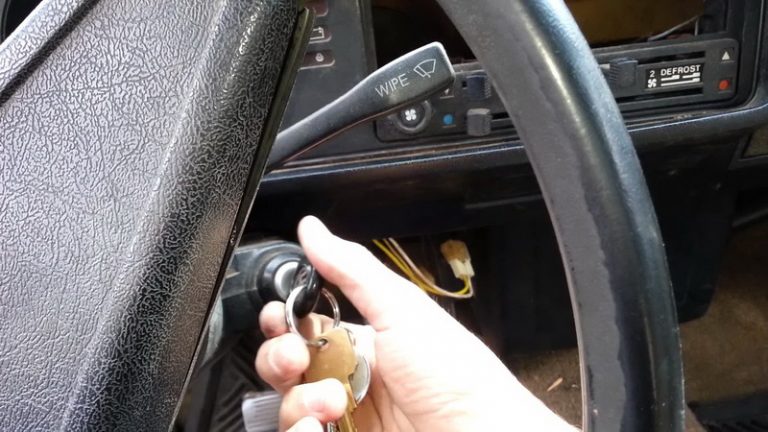
Main fault diesel engine is low compression. It is formed as a result of excessive wear of compression rings and cylinder walls. piston group. The reasons for this lie in poorly lubricating oil, which does not provide the formation of a film on the walls of metal parts rubbing against each other.
Measure compression with special device on a motor warmed up to 80 ° C, which is called a compression gauge. To measure, it is necessary to unscrew the nozzles or glow plugs and connect a compression gauge to their location. Next, the diesel fuel supply is turned off, this is done by pressing a special lever located on the injection pump. After that, it is necessary to scroll the engine for ten seconds, waiting for the maximum value of the compression gauge. It should be at least 28 atmospheres, if the engine is old-style, modern should be 45 atmospheres. All cylinders are checked sequentially, which should show the same value. Lack of proper compression will mean more cylinder wear or coking piston rings, which will lead to overhaul unit.
When this breakdown happened on the road, and there is no way to tow the car to the place of repair, you can pour oil into the cylinders, which will raise the compression for a while and allow the car to drive a few tens of kilometers to the nearest service station.
Other types of faults
Problems in which the engine does not start well can also be in glow plugs. Their inadequate quality will not allow the car to start in the frosty season or after long downtime. To check, they must be unscrewed and, using the wires, connected to battery cars. Negative wire place on the body of the candle, and positive - on its contact. The candle should heat up quickly. This is how all glow plugs are tested. This breakdown has a bad effect on the start of a cold engine when it is in operating temperature She has no effect on him.
Another common cause the fact that the car does not start well is the use of off-season diesel fuel.
IN winter time it is necessary to fill in frost-resistant diesel fuel, otherwise it will simply freeze and thicken too much.
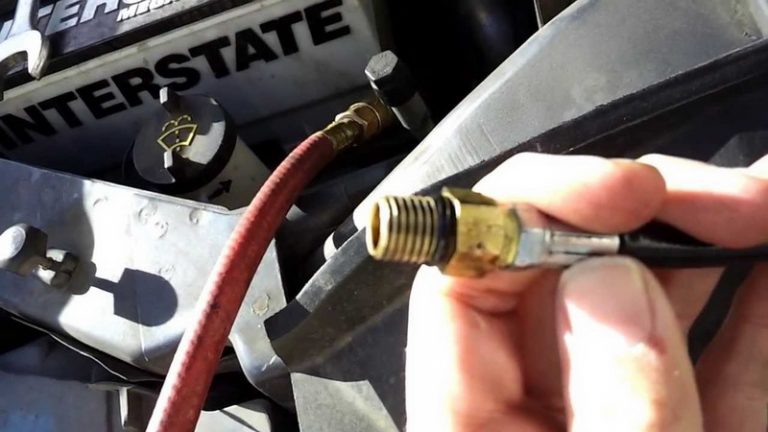
Conclusion
Many automakers have significantly improved diesel powertrains that get rid of sores. previous models, but this does not give a reason for the car owner not to engage in timely maintenance. By showing due attention to the car, you can ensure that with such a unit it will last a very long time.
» Diesel does not start, malfunctions and causes
If the diesel does not start, then you are welcome to us
Since 2000, diesel engines have been plagued by typical, rather serious failures and they will not start or start poorly. This is the result of a significant complication of engines after the introduction of Euro 3 and higher toxicity standards.
Vehicles with diesel engines are very attractive purchases for buyers. Although the specifications are petrol car, they provide about 30% savings in fuel consumption. However, the cost of their maintenance, it turns out, is not at all so small. Cause- very expensive to repair faults. It turns out that their source is very high degree complexity of diesel engine equipment.
Fifteen years ago diesel engines produced with forced ignition, if we are talking about the level of technology used. This was necessary to meet increasingly stringent toxicity requirements. exhaust gases. Together with Euro-3, the introduction of advanced self-diagnostics and sensors (OBDII system) turned out to be necessary. Subsequent standards forced the application precise definition composition of exhaust gases using a broadband lambda probe, filtration of soot particles from exhaust gases and reduction of nitrogen oxides in DeNOx systems.
When choosing a car with a diesel engine, it is necessary to reckon with some typical defects for these cars. Often, due to the increased soot emission, they turn sour, but there are also many other malfunctions for which the diesel engine does not start, which we will discuss below.
Why is it bad to start a diesel engine, video
Below are the most common problems with diesel vehicles and the reasons why they won't start.
Diesel Injectors
injection technology common rail changed the face of diesel engines. Very accurate electronically controlled allow you to combine performance with relatively good exhaust gas cleanliness. The accuracy of the manufacture of nozzles must be enormous, at a level below one thousandth of a millimeter. In the course of work on the fuel containing biocomponents and under influence wear out. First, the control valve is depressurized, and over time, the injector tip is decalibrated.
The time it takes for everything to reach an accident depends largely on the type of engine and the type of high-pressure equipment. Practice shows that, by far, the least durable nozzles come from the company Delphi. There are times when their breakdowns occur after 120 thousand kilometers (for example, Renault), while the most resistant ones (Denso, Bosch) are often able to withstand even a run of more than 400 thousand kilometers (for example, Opel Vectra).
In some engines, the nozzles bake themselves, and sometimes they break off when removed. Then their dismantling by a specialist is much more expensive, here it is already necessary to remove the cylinder head.
Malfunction symptoms:
- diesel does not start or starts poorly
- exhaust smoke - black
- uneven operation of the power unit
- increased fuel consumption.
Repair of CR injectors: control valves, burnt coils, and used injection tips are subject to replacement (or repair). Regeneration requires the use of an appropriate measuring device, and specialized services are engaged in this. New piezo injectors have interchangeable injection tips, but if serious failures occur, they usually cannot be repaired (only replacement with new ones).
- Dacia Logan 1.5 dCi - has Delphi injectors that are extremely sensitive to fuel cleanliness.
- Ford Mondeo III 2.0 TDCi - has a common rail pump that destroys injectors.
- Ford Focus 1.8 TDCi - has Delphi hardware with a very limited lifespan.
- Jaguar X-Type 2.0 D - The engine (Ford) is equipped with an unreliable high pressure pump.
Turbocharger
Turbocharger provides diesel engine good performance, and draws its drive from the energy of the exhaust gases. And it is operation in the presence of very hot exhaust gases that causes most of the problems associated with the durability of the turbocharger. Turbochargers are very sensitive to quality engine oil. A turbine rotor rotating even several hundred thousand times per minute can get stuck if the oil “does not hold” the parameters.
The compressor wheel is so delicate that it can be damaged by sand entering through the air filter. Sudden shutdown of the engine without cooling after long drive causes, in turn, carbonization of the oil, the formation of coke and sticking of the turbocharger bearings. In turn, turbochargers variable geometry they really don’t like slow driving, which results in contamination of the geometry system with soot.
Malfunction symptoms:
- the presence of oil in the intake system and in the exhaust gases
- turbocharger whistle
- engine switch to emergency mode
- increased oil consumption in the engine.
Turbocharger Repair: It is technically possible to regenerate each type of turbocharger. Non-variable geometry turbochargers are easier and cheaper to repair, while variable geometry turbochargers are slightly more expensive to repair. Additional costs may arise if the "turbo" is electrically controlled.
Diesel models malfunctions:
- BMW 320D E90 - has a not very durable electrically controlled turbocharger.
- Ford C-Max 1.6 TDCi - there is a thin turbocharger.
- Peugeot 206 1.6 HDI - has problems with turbine lubrication (faulty oil line).
- Renault Scenic II 1.9 dCi - turbocharger exposed rapid wear through defective lubricants.
- Renault Espace IV 2.2 dCi - has the same inconsistent turbocharger as cars with 1.9 dCi engines.
High pressure pump
In system common rail is supplied from the tank through a small electric pump. Several types of pumps are used, depending on the brand of the injection system and its generation. It contains not only transport sections, but also valves responsible for pressure regulation. Each of these elements is subject to wear. In addition, leakage problems may appear (typical, for example, in Mercedes). But these pumps have repair parts available. Repairs are carried out by specialized workshops.
Malfunction symptoms:
- the need for a long rotation of the starter
- power development problems.
Pump Repair: New rollers, transport sections, valves and sensors are available for most types of high pressure pumps. By the way, new seals are also applied. Repair of the pump restores its original parameters. The exception is the Mondeo III 2.0 TDCi injection pump equipment, in which the high-pressure pump has an unreliable design and repairs do not last for a very long time.
Models with faulty diesel:
- FORD MONDEO III 2.0 TDCI - has a defective pump in which the shaft collapses.
- MERCEDES C 220 CDI (W202) - often has problems with fuel leakage from the high pressure pump.
- NISSAN X-TRAIL II 2.0 DCI - has serious problems with pump shaft.
- RENAULT LAGUNA III 2.0 DCI - same engine as Nissan, same shaft issues.
Flywheel two mass
It is installed (in the vast majority) on diesel engines. Its task is to dampen vibration in the crank-piston system. The dual mass flywheel not only improves driving comfort, but above all reduces the stress on the gearbox and also allows you to reduce speed. idle move(reduction of CO2 emissions). In some cars, two massive wheels can withstand a quarter of a million kilometers, while in others up to 100 thousand kilometers. The shelf life is reduced by city driving (low revs, frequent starts).
Diesel engine symptoms:
- jerking when idling
- knocking when turning off the engine and creaking when downshifting.
Replacing the strength wheel: the used flywheel should be replaced with a new one. Usually, by the way, a new clutch is also installed.
Diesel models:
- FORD MONDEO III 2.0 TDCI - the engine is extremely fragile.
- MAZDA 6 2.0 CD - lags behind other "Japanese" wheel strength.
- PEUGEOT 406 1.6 HDI is heavy car with a weak two-piece flywheel.
Diesel particulate filter DPF
It is a mandatory element in all "diesels" that meet the Euro-5 standard. particulate filter is responsible for the removal of soot particles, which are carcinogens, from gases. The device collects and burns soot. A high engine load (motorway speed) is required to ignite the soot. Unfortunately, during city driving, the conditions for soot burn-out do not occur in the engine and, consequently, many filters become clogged, which causes the engine to go into emergency mode.
Symptoms, malfunctions:
- transition to emergency mode
- high fuel consumption
- problems with work, hard to start
Replacing the DPF/FAP filter: A damaged filter can be replaced with a new one. Replacements are available for most models. Sometimes you can use filters after factory restoration.
Diesel models:
- MAZDA 6 2.0 MZR-CD - has the notorious problems with the soot burning procedure.
- OPEL INSIGNIA 2.0 CDTI - has a very sensitive filter for frequent city driving.
glow plugs
Often they are hidden behind the engine. What's worse, they are small, and are used in some engines with four valves per cylinder and can break during spinning.
Malfunction symptoms:
- problems with starting or diesel does not start, (starts poorly on a cold)
Replacing spark plugs: sometimes there are problems with access, but the biggest trouble is spark plugs that break off when unscrewed. Then it is necessary to remove the head of the block and repair the thread.
Diesel models:
- MERCEDES C 220 CDI is a model where glow plugs can break.
- OPEL VECTRA C 2.0 DTI - also has problems when unscrewing candles.
- TOYOTA AVENSIS 2.0 D-4D is an engine with thin glow plugs.
Diesel fuel pressure regulator
The fuel pressure regulator is located either on the high pressure pump or on the injector rail. It performs precise adjustment of fuel pressure in the range from several hundred bar to 2000 bar. The pressure adjustment is also responsible for the accuracy of fuel dosing.
Malfunction symptoms:
- free spin waves
- jerks when moving while working
- hard to start, hard to start
Replacing the regulator: the replacement itself is not a complicated operation, as a rule, the fault diagnosis takes the most time. The regulator is not repairable because it is not a collapsible type.
Diesel models:
- BMW 320D E46 - There are problems with the regulator, as in the 330d version.
- PEUGEOT 307 2.0 HDI is typical cars with emergency pressure regulator.
- SKODA OCTAVIA 2.0 TDI CR - has frequent regulator failures, like all 2.0 TDI CR.
Does not want to start a diesel engine in the cold - low speed.
Of course, the glow plugs are burnt or worn out - the average owner of a car with a diesel engine thinks. It is possible, but usually a glow plug failure will be accompanied by an amber warning light. If such a light is on, the diagnosis is clear. It is worse if not a single light indicates a malfunction, and the diesel engine does not want to start. Is this normal for old and slightly used cars? Not at all!
If, when connecting a computer to a service center, no error codes are displayed that would clearly indicate some kind of malfunction, it is necessary to measure the engine rotation speed during an unsuccessful start attempt. The workshop often has the problem that the car arrives in some way previously started, either due to a rise in temperature or just heat in the engine area, and it is difficult to guess what is causing the morning problems.
Let's write out a few points on which the diesel engine will not start:
- The starter turns slowly.
- Summer.
- Faulty injection pump (high pressure fuel pump)
- Faulty glow plugs
In such a situation, it is worth cooling the car overnight and immediately before the first attempt to start, connect a service computer to measure the speed crankshaft engine by driving the starter. Usually such a measurement explains the reason why the diesel engine does not reach the speed threshold at which fuel is injected. No fuel, diesel engine won't start!
Often the reason that a diesel engine does not want to start in the cold is wear and tear: it seems to turn, but badly. It is impossible to hear the minimum deceleration, which in many cases is decisive. It also happens that, which needs to be replaced, in another car (for example, a carburetor) it would have worked for another year or two without problems. In any case, the days when a diesel engine can start if the starter barely turns are long gone. Without exceeding the specified threshold of rotation speed, it cannot start.
Unfortunately, it happens that replacing the battery will not help either: the diesel does not want to start, because it does not reach the threshold rotation speed due to starter wear. In case of problems with the starter, so-called steps appear; theoretically, the starter is subject to regeneration, in many cases it restores the full or at least sufficient efficiency of this element, but in some diesel engines, for example, the VW group, max. the starter usually does not work well enough; or works, but too slowly.
In some models, the only solution for the diesel engine to want to start in the cold is to replace the starter with a new and original one. Buying a "Chinese" or a used item either does not solve the problem, or will solve it for a short time.
There is another way to deal with the fact that the starter engine does not reach the threshold speed at which fuel injection occurs and does not want to start: this is electronic lowering of the threshold at which fuel injection occurs. Modification software often helps, but can also Negative consequences: it happens that diesel in adverse conditions working on extremely low revs, gets into vibrations, cannot accelerate and stabilize even after a few tens of seconds after the start.
This has the following negative consequences, for example, the service life of the flywheel strength is reduced. It is better to simply replace the starter or check that the electrical connections have not been contaminated or corroded, which can also cause a fairly quick breakdown.
Fuel pump - diagnostics and repair Nagar on spark plugs, what are the causes and malfunctions (Voted 4 , grade: 5,00 out of 5)
Imagine a situation. You wake up early in the morning, hurriedly go to the garage and get into the car. You turn the ignition key and ... The car does not start. Probably every car owner has faced such a situation. The problem with starting the engine is one of the most unpleasant. After all, you need to go, but the car is standing. There is panic. What to do if the diesel does not start? The reasons and methods for their solution are further in our article.
Features of the diesel engine
In gasoline units, a mixture of air and fuel is formed, which is injected into the cylinders with the help of an injector. Once in the combustion chamber, the mixture is ignited by a candle and a working stroke occurs. Next - release, compression, then the cycle repeats. Unlike petrol engines, the mixture in a diesel engine is ignited by high pressure. It enters the combustion chamber with the help of spray nozzles. In addition, a glow plug is included in the work, which heats the fuel to the desired temperature.
But when they fail, the diesel unit is not able to start normally. The glow plug greatly simplifies the process of igniting the fuel, and, accordingly, starting the engine. If the diesel does not start "cold", then the control relay has broken and the candle does not heat up the diesel fuel. Action given element does not stop until the coolant temperature reaches operating values. The glow plug has often saved car owners in the winter.
We also note that, in addition to the ignition method, such motors differ in design fuel system. And if gasoline has a simple submersible pump, then there are two of them: one low and the second high pressure. Well, let's look at why the diesel does not start "cold" and "hot".
Compression
Initially, its level is two times higher than that of gasoline units. The mixture ignites from strong compression. And the drop in compression does not have the best effect on starting the engine. Since any compression process is accompanied by the release of thermal energy, the mixture does not heat up enough and is not able to ignite. If this is a car with high mileage, compression drops with wear of the cylinder walls and burnt rings. Recall that each piston has three rings. Two compression, one - oil scraper. This requires disassembly and repair of the engine. It happens that the compression drops in only one of the cylinders. In this case, the diesel is either troit. This means that one of the cylinders does not work or ignition occurs irregularly.
What is normal compression?
If for gasoline units this figure is from 9 kg / cm², then for diesel units the minimum value is 23 kg / cm². It is measured using a special device - a compression gauge. In this case, the starter must be turned for no more than 3-4 seconds, otherwise the battery will be discharged. Already at the first "grasping" the result will be visible. With further rotations of the crankshaft, it will not change.
glow plugs
Why won't diesel start? The reasons may be hidden in It is very simple to determine this breakdown - the car starts well only on a warm engine. The starter turns "on a cold", but the engine does not start due to an unheated combustion chamber. Usually happens in winter.  Also, if the motor was able to start, it will work intermittently. If the diesel engine does not start well "hot", it is possible that several glow plugs have failed at once.
Also, if the motor was able to start, it will work intermittently. If the diesel engine does not start well "hot", it is possible that several glow plugs have failed at once.
Relay
This element is controlled by a relay. Sometimes a breakdown of this element causes problems with starting the motor. How to check it? When starting the car, you should hear characteristic clicks from the spark plug relay. If not, the element is burned out and needs to be replaced. The spark plugs themselves are in perfect working order.
Fuel system
As we said earlier, its device is significantly different from gasoline analogues. In 60 percent of cases (including on Ford cars), a diesel engine does not start due to problems in the first thing that could be a clogged injector. This is due to poor quality fuel. You cannot clean them yourself - only in a specialized service.
Filters
What are some other reasons why a diesel engine won't start? Of course, these are filters. You need to check their condition.
There are two levels of purification in the diesel engine fuel system - coarse and fine.
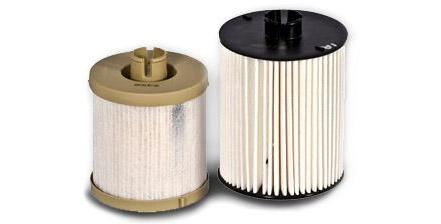
The latter must be given Special attention. The paper cavity of the filter, through which the fuel passes to the nozzles, is capable of retaining particles up to 10 microns in size. The resource of this element is 8-10 thousand kilometers. If you do not follow this regulation, the filter will simply become clogged. As a result, fuel will not enter the combustion chamber, although the pump delivers the right pressure. You can determine this by the nature of the movement of the car. If dips in dynamics are observed, this means that the fuel is supplied with a delay. And it is the filter clogged with dirt that delays it.
It is worth mentioning about air elements. 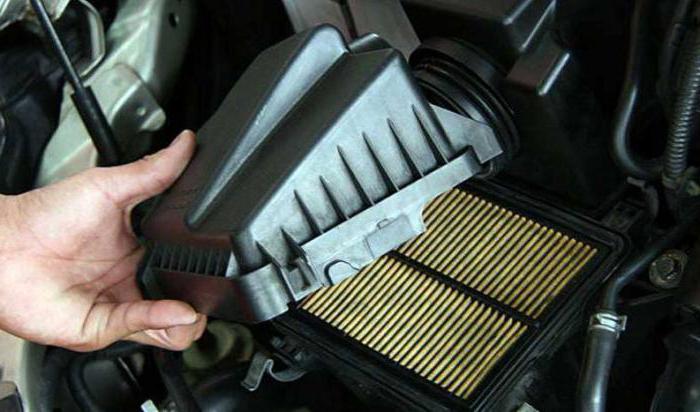 These filters also need to be replaced. According to the regulations, their service life is 10 thousand kilometers.
These filters also need to be replaced. According to the regulations, their service life is 10 thousand kilometers.
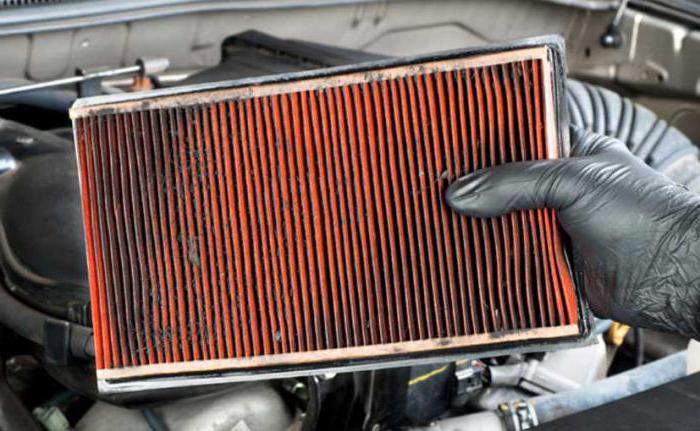
They are stored in a plastic case, you can replace them with your own hands by sliding the mounting brackets and removing the cover. The photo above shows what a dirty air filter looks like. As a result, the diesel will not start. Oxygen supply stops or decreases to the minimum level. The engine does not have enough air - it chokes on fuel.
dark smoke
If the engine is difficult to start, and black smoke comes out of the exhaust pipe, this indicates wrong work nozzles, namely their spraying of fuel. It is produced in excess, which is why part of the fuel does not have time to burn out and flies out, as they say, “down the pipe.”
Pump
The system has two mechanisms. These are high pressure fuel pump and high pressure fuel pump. Often the first element fails, since its device is more complex than that of the second. The pump cannot produce the required pressure in the fuel system, which is why the diesel engine does not start or starts with difficulty. The movement is accompanied by "sneezes" (as if the car does not have enough fuel). It should be noted that a belt is connected to the injection pump. It may break or fall off. First of all, we check the belt drive. Check the fuel system fuses (which go to the pump). One of them may burn out. This often happens when short circuit. Experienced motorists are advised to always carry a set of spare fuses in the glove compartment.
Fuel and winter
Especially often a diesel engine does not start well in the autumn winter period, when the air temperature drops sharply, and “Arctic” fuel has not yet appeared at gas stations. As a result, the summer "solar oil" simply freezes. At low temperatures it crystallizes and turns into paraffin, which is clogged in fuel lines and filters. 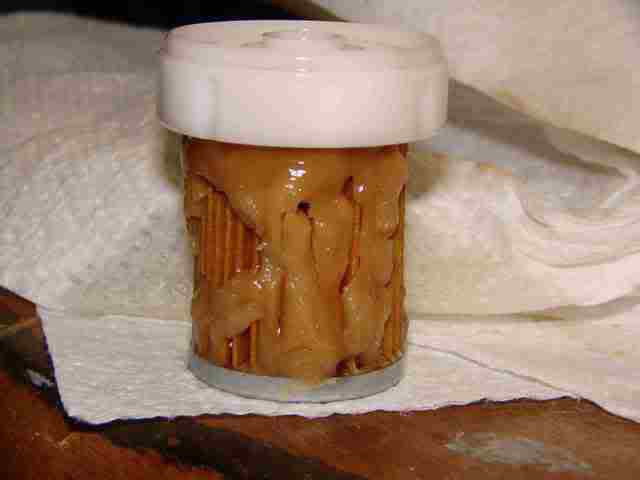 Further movement with such a filter as in the photo above, it is simply impossible. Some vehicles have filter heating installed. But it saves only at startup. After a couple of seconds, the car turns off again. It is very difficult to heat up the entire tank with frozen fuel. Not all vehicles have preheater. What is the difference between summer and winter fuel? In the presence of additives that reduce the waxing threshold at low temperatures. To prevent the problem from taking you by surprise, before the onset of cold weather, purchase an additive in diesel fuel. Experienced motorists recommend not to leave the car in the parking lot with half empty tank. During the night, the liquid condenses and water forms on the walls. It also does not have the best effect on starting the engine. In winter, try to keep the level above half. Moreover, the ride empty tank often kills the pump. This applies not only to diesel, but also gasoline vehicles.
Further movement with such a filter as in the photo above, it is simply impossible. Some vehicles have filter heating installed. But it saves only at startup. After a couple of seconds, the car turns off again. It is very difficult to heat up the entire tank with frozen fuel. Not all vehicles have preheater. What is the difference between summer and winter fuel? In the presence of additives that reduce the waxing threshold at low temperatures. To prevent the problem from taking you by surprise, before the onset of cold weather, purchase an additive in diesel fuel. Experienced motorists recommend not to leave the car in the parking lot with half empty tank. During the night, the liquid condenses and water forms on the walls. It also does not have the best effect on starting the engine. In winter, try to keep the level above half. Moreover, the ride empty tank often kills the pump. This applies not only to diesel, but also gasoline vehicles.
Starter
With him, the problem occurs both on gasoline and on diesel vehicles. It also has a relay connected to it. 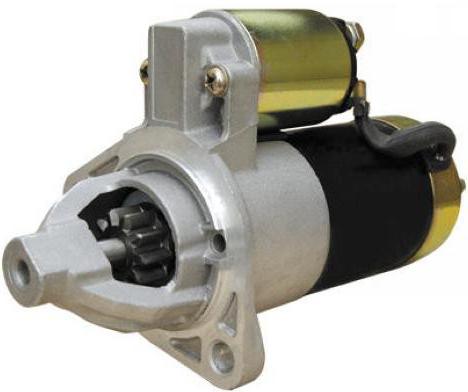 And if we listen for clicks, as is the case with the glow plug relay. Maybe it's a break in the circuit. Check battery charge. Of course, overnight he can not fall to such low level. Even at eight volts, it will turn the starter. Slowly, but still. A sharp decline level occurs in the event of a short to ground. Perhaps the contact has broken off and is “shorting away”.
And if we listen for clicks, as is the case with the glow plug relay. Maybe it's a break in the circuit. Check battery charge. Of course, overnight he can not fall to such low level. Even at eight volts, it will turn the starter. Slowly, but still. A sharp decline level occurs in the event of a short to ground. Perhaps the contact has broken off and is “shorting away”.
timing belt
Why won't the diesel start? If the battery is well charged, the starter turns, but does not “grab”, the timing belt may have broken. The system is unable to select desired phase for each cylinder. Often on 16-valve engines, this breakdown is accompanied by deformation of the intake and exhaust valves. They bend when the piston hits. ![]() In order not to bring the car to such a state, check the condition of the belt. In the presence of tears and cracks, it must be replaced. Buy original spare parts. The belt is a very important part in a car. According to the regulations, it changes every 70 thousand kilometers. If this chain drive, the element can simply stretch or skew by one or more teeth. Manufacturers say that the circuit in the engine is designed to last the life of the engine. But after 200 thousand, it stretches - noises are heard during operation. With such symptoms, it is urgent to change it.
In order not to bring the car to such a state, check the condition of the belt. In the presence of tears and cracks, it must be replaced. Buy original spare parts. The belt is a very important part in a car. According to the regulations, it changes every 70 thousand kilometers. If this chain drive, the element can simply stretch or skew by one or more teeth. Manufacturers say that the circuit in the engine is designed to last the life of the engine. But after 200 thousand, it stretches - noises are heard during operation. With such symptoms, it is urgent to change it.
Conclusion
So, we found out why the diesel does not start. As you can see, there can be many reasons. But to avoid such a situation, change filters in time and fill quality fuel(in winter - necessarily arctic). If it is very cold, take the battery with you into the house. At severe frosts it loses up to 30 percent of its charge overnight. This way you will provide the system with a good starting current, and the engine with clean fuel. And problems with difficult start will not bother you anymore.
Engine internal combustion, running on diesel fuel, has a fundamentally different design and principle of operation compared to gasoline units.
That is why the reasons why a diesel engine does not start are also very different from problems with gasoline engine. To this should be added the fact that in some cases there are completely different signs of malfunctions in the operation of the unit. But in order to understand these reasons, you need to understand how a diesel engine works.
Principle of operation
For a long time diesel units installed only on trucks And heavy equipment. All because they provide more economical consumption fuel compared to gasoline, and their performance is much higher.
Then they began to equip SUVs. To date, this type of motor is increasingly being installed on passenger cars. But the structure and features of the operation of units of this type also suggest some of their shortcomings, which you have to deal with all the time. Therefore, the topic of choosing between diesel and gasoline engines will probably always be open.
But now a little more about how diesel still works:
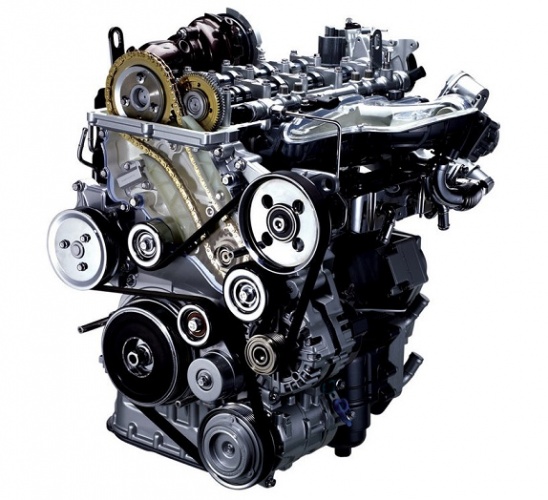
At the same time, the compressor in separate tanks pumps air, which will enter the diesel engine. Air is admitted and fuel is sprayed automatically by separate valves.
Diesel engine features
As a result of the fact that air is supplied to the cylinders under high pressure, the design of the valves is significantly strengthened here compared to gasoline unit. This is reflected in an increase in size and weight. In addition, it generates more noise and vibration. Another one design feature diesel engines is the presence of glow plugs, which often have to be changed, especially at low temperatures.
The most common reasons why a diesel engine stalls
Although bad job diesel engine is typical problem for the winter season, in the summer it can also be relevant. And all because given type units has its own nuances, which constantly have to be reckoned with.
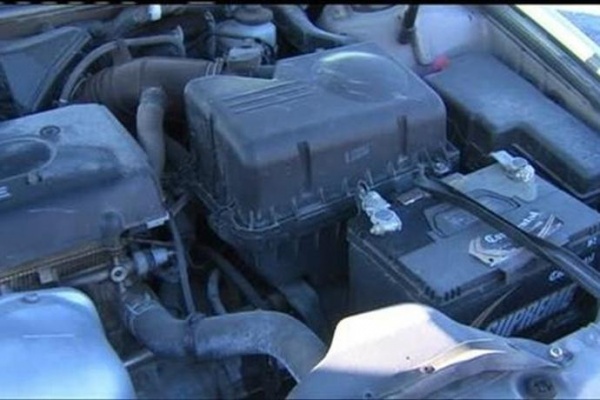
Attention! Summer fuel in the system is the most common reason a diesel engine won't start when cold.
Perhaps every owner of a car running on diesel fuel faced this situation. As a result, the only way to revive the unit is to transport the car to a warm garage and warm up the fuel system. But this is only a temporary solution to the problem. The fuel will still have to be completely drained and filled with winter fuel.
Diesel won't start in summer
In the common people - the diesel engine does not start "hot". It is this situation that makes drivers the most nervous. Because it is problems with a diesel engine in the warm season that can indicate a serious breakdown, which means rather big costs.
In such a situation, the starter can turn, but the engine does not seize, while it comes down from the exhaust pipe gray smoke. These signs mean that fuel enters the cylinders, but does not ignite there, or does not completely burn out. There may be several reasons for this:
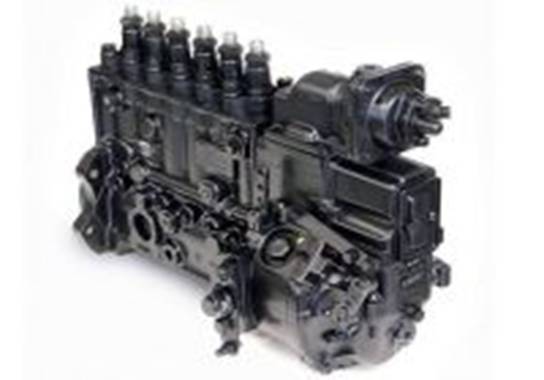
Now a little about the breakdown of the injection pump, which is often accompanied by much more serious costs than it actually requires. It is characterized by difficulty starting the engine during the day, when the car has already done some mileage, but after it has been turned off, it cannot be started again. Most often, this sign indicates wear and tear. fuel equipment and not the engine itself.
HPFP is a high pressure fuel pump. Of all the fuel equipment, it is he who fails most often. To determine problems with the fuel pump, it is enough to pour a couple of liters of cold water on it. It is necessary to pour exactly on the part where the high-pressure pipes come out and go to the nozzles.
If after that the car starts up, it means that the pump has exhausted its reserve. If for some time he still works, then for sure, the situation will repeat itself. After a short period of driving, the car will no longer be able to be started.
How to fix such a problem? If the engine does not start hot due to the wear of the injection pump, the pump can either be repaired or completely replaced.
Attention! Majority service centers offer a more expensive procedure - complete replacement pump. But that doesn't mean it can't be repaired. If you contact professional centers, they will help you repair the pump in 90%, which will save you a lot of money.
In almost all cases, when the failure of the high-pressure fuel pump is associated with wear of parts, the pump must be repaired. The only exception is a critical failure of the pump. For example, after a serious collision of a car, as a result of which the pump housing was split.
If the engine does not start when cold
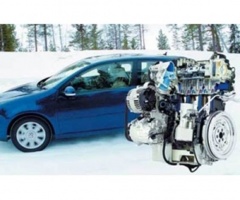
Often in this case it turns out that the glow plugs have burned out. The first thing to do is to check them, and if necessary, replace the failed ones. But another common cause is low blood pressure. fuel pump. Clear signs- this is the inability to start the car after parking at night, critical temperature environment can become any below zero degrees.
After turning on the ignition and tightening the suction, the motor does not seize. That is, the diesel engine does not start even after several attempts. A light white smoke comes out of the exhaust pipe, but the start does not occur.
To start the diesel engine, you can still try to loosen all the tightening nuts on the injectors a little. In this case, the fuel will flow into the diesel engine more freely. Immediately after this, the nuts should be tightened again. Some of the fuel will already be in the engine. It is in this state that you need to try to start the diesel again.
If there is no reaction - you need to measure the compression in the diesel engine. This should be done with a compression gauge and on a cold unit. If the device shows a level of 30 and above on each cylinder, it means that everything is in order with the compression in the diesel engine.
After that, you need to check the spray of the nozzles when scrolling with the starter. If everything is in order with spraying, we check the glow plugs with a voltmeter. If during the test there is no spark, at least in one candle, it means that the reason is the burnout. Accordingly, the candles must be changed in order for the diesel engine to start. Below is a video with more detailed description all of these procedures
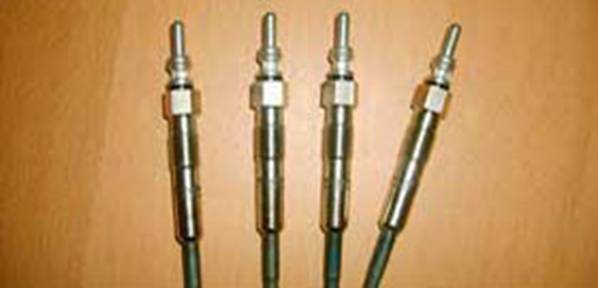
Many novice drivers simply do not know how to start correctly diesel engine, which is the reason for its difficult start, and over time - the failure of some engine parts. You can not start moving without warming up the diesel. At low temperatures, glow plugs should always be used.







